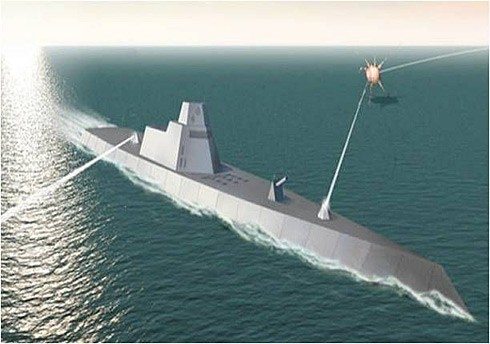In the wake of the recent announcement that laser weapons will be put on U.S. Navy ships, the need for reliable, high-voltage shipboard power has become a matter of national security, officials said at this week’s Electric Ship Technologies Symposium outside Washington, D.C.
The Office of Naval Research (ONR)-sponsored event featured some of the world’s top scientists and engineers in power systems, who agree that a new era in electric power is within sight.
“The work being done in this area is vital,” said Dr. Thomas Killion, who heads ONR’s Office of Transition. “As the upcoming deployment of a shipboard laser weapon reminds us, we need power generation and power management systems with greater-than-ever capabilities, but from devices that are smaller than ever.”
Earlier this month, Chief of Naval Operations Jonathan Greenert announced that for the first time a laser weapon system (LaWS) will be placed onboard a deployed ship, USS Ponce, for testing in the Persian Gulf in 2014. The announcement underscored the need for accessible high-power electric generation, capable of meeting the substantial demands that will be needed to power laser systems and other high-power weapon systems.
As the technology advances, and faced with rising and unpredictable fossil fuel costs, the Navy’s next-generation surface combatant ship will leverage electric ship technologies in its design.
While electric ships already exist, design characteristics of a combatant ship are more complex with regard to weight, speed, maneuverability-and now, directed energy weapons.
ONR-supported scientists are focused on cutting-edge technologies that include silicon carbide (SiC)-based transistors, transformers and power converters.
“SiC is important because it improves power quality and reduces size and weight of components by as much as 90 percent,” said Sharon Beerman-Curtin, ONR’s power and energy science and technology lead. “This is a critical technology enabler for future Navy combatant ships that require massive amounts of highly controlled electricity to power advanced sensors, propulsion and weapons such as lasers and the electromagnetic railgun.”
Killion said that a lighter, smaller footprint on ships will contribute to the substantial increase in energy efficiency that is predicted from breakthroughs in electric power research.
“The enhanced capabilities and potential cost savings of increased power at reduced size cannot be overemphasized,” he said. “This is the future.”
Improved power systems could have enormous impact in both military and civilian sectors. Concerns by engineers over an aging power grid in the United States and elsewhere, for instance, have grown in recent years.
The Navy’s power and engineering efforts that will further naval power hold similar promise for civilian benefit. ONR sponsors the Electric Ship Research and Development Consortium (ESRDC), composed of eight leading universities. The ESRDC is focused on afloat power systems, and leads efforts to address a national shortage of electric power engineers, and ensure U.S. superiority in electric systems.
Some of the critical technologies ONR is working on include power-dense electronics; new power conversion capabilities; energy storage; and sensors, weapons and protection. Killion said all of these areas deserve support because they are of naval and national importance.
“A key challenge in designing an all-electric future naval combatant ship is enabling technologies that can provide power agility with minimal energy storage needs,” said Beermann-Curtin. “We are making truly noteworthy progress toward those goals.”
At the symposium, Killion also announced the pending Fiscal Year 2013 Small Business Innovation Research solicitation opportunities in the power and energy area, including continued development of automated methods for design of cooling systems; alternative power supplies; ship energy use monitoring and analysis methods; compact connectors; and compact power for radio frequency sources.










